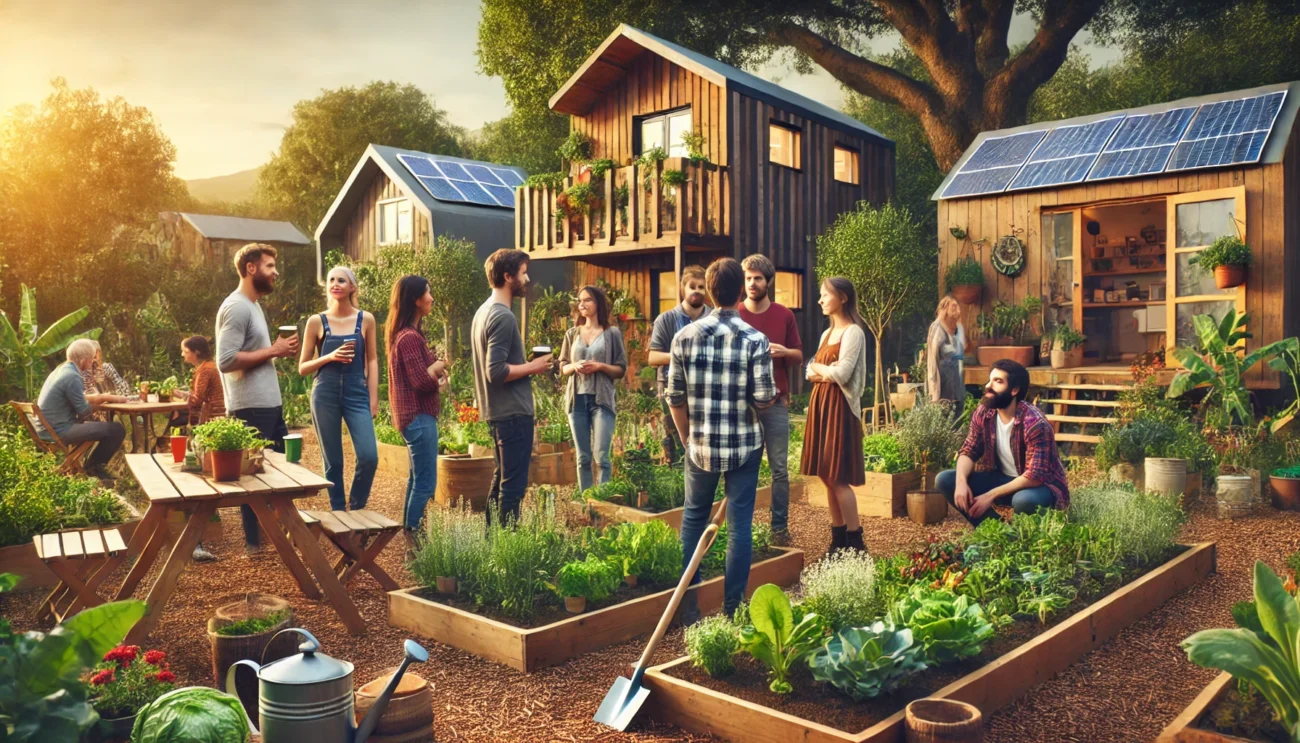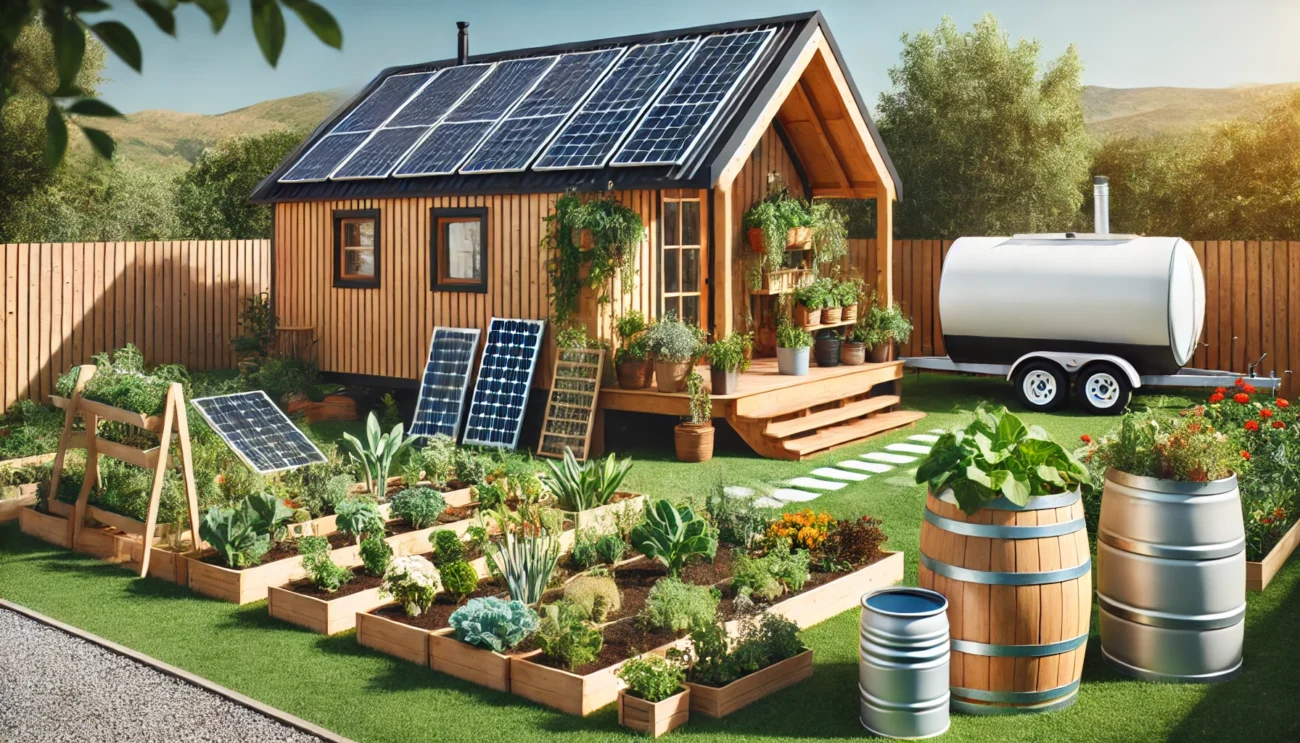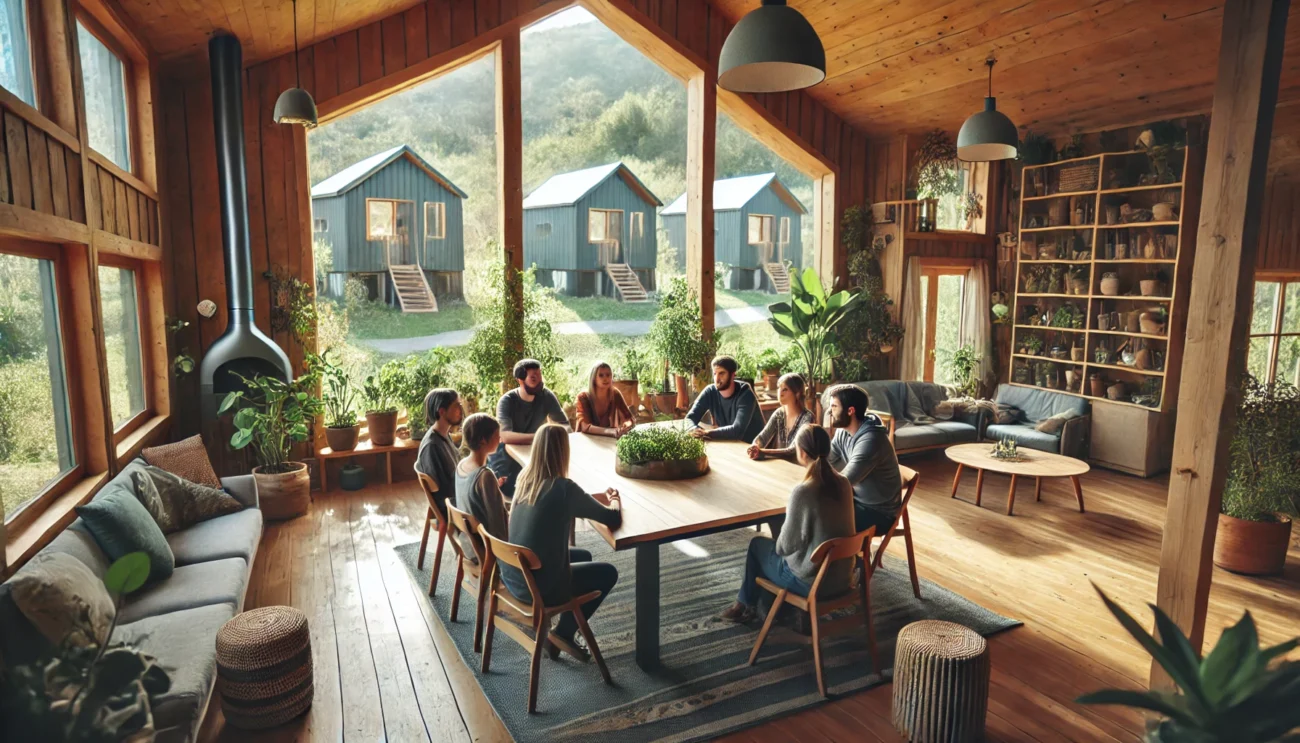Blog
Tiny house eco-villages in France: a new way of living together

Rising housing and energy costs, the ecological crisis, rampant urbanisation… there are many reasons why Tiny House eco-villages are becoming increasingly attractive to individuals and local authorities. Combining minimalism, sustainability and community living, these new participative villages offer alternative solutions for living differently and together. In France, initiatives like Rezé Village and Ty Village are springing up all over the country to meet this need for meaning, ecology and autonomy.
🌟 Imagine a community of small ecological houses (in the countryside or in the city, these eco-neighbourhoods are possible 🌿 ), where the inhabitants share not only a space but also a vision: that of a simple way of life, respectful of the environment and centred on the collective. In this article, we explain everything you need to know to join or create a participative eco-village: the basics, the selection criteria, the advantages and also the limitations of these new alternative habitats.
What is an eco-village of tiny houses?
A Tiny House eco-village is a community organised around small ecological dwellings. Designed to minimise environmental impact, these mini-homes (mobile or fixed) and the village’s shared spaces are designed to reduce energy consumption and optimise space, with the aim of achieving partial or total autonomy.

The fundamental pillars of eco-villages
- 🌱 Respect for the environment:
- Use of sustainable materials such as recycled wood and hemp insulation.
- Energy self-sufficiency thanks to solar panels and water recovery systems.
- Compostable toilets to reduce the ecological footprint.
- 🫱🏻🫲🏽 Community life :
- Shared spaces for gardening, meals or social activities.
- Self-help and participative governance systems that promote social cohesion.
- 👛 Economic accessibility :
- Affordable rent, often between €230 and €305 per month for use of the land.
- Reduced costs thanks to collective management and the absence of property taxes for mobile models.
Criteria for joining a tiny house eco-village

1. Technical aspects
Tiny houses must comply with strict standards:
- Be built by qualified professionals.
- Meet safety and insulation standards.
- Self-builds or other types of dwelling (mobile homes, caravans) are often excluded.
2. Economic and ecological project
- Economic feasibility: applicants must demonstrate their ability to pay the monthly rent and maintain their home.
- Ecological commitment: proposing concrete actions to protect the environment, such as the use of renewable energy or recycling practices.
3. Community criteria
- Open-mindedness and willingness to participate in community life.
- Contributing to the upkeep of communal areas or collective projects, such as permaculture workshops or social events.
The advantages of tiny house eco-villages

1. An economic alternative
- Low cost: A turnkey tiny house costs between €40,000 and €70,000, well below conventional property prices!
- Lower costs: Energy requirements and maintenance costs are minimal.
2. An ecological lifestyle
- Carbon footprint reduced by up to 45% compared with a traditional house.
- Use of sustainable and recyclable materials.
- A lifestyle that encourages sobriety and disconnection from over-consumption.
3. An enriching community life
- Creating strong links between residents through collective projects.
- Sharing resources and spaces, encouraging mutual support.
Challenges and limits of tiny house eco-villages

Despite their many advantages, these projects face a number of challenges:
- ⚖️ Uncertain legal framework :
- In France, tiny houses do not yet have a clear legal status.
- Their installation can be complicated by local regulations on land use.
- 🎯 Rigorous selection :
- Applicants must meet stringent technical and social criteria, sometimes limiting access to certain profiles.
- 🙅 Maintaining the community balance :
- Community life can sometimes give rise to tensions, requiring mediation and governance mechanisms.
🎙️Témoignages of inhabitants

Cécile, resident at Ty Village
‘Living here means rediscovering what’s essential. I’ve learnt to consume less, share more and appreciate the richness of the nature that surrounds me.’

Mathieu, new arrival in Rezé
‘Solidarity is at the heart of the project. Whether it’s gardening or repairs, everyone contributes to the project’.
How can I join a tiny house eco-village?
- 📝 Prepare your file :
- Write a covering letter explaining your project and your vision of community life.
- Provide a technical description of your tiny house.
- ✊ Get involved:
- Show a clear desire to play an active part in community life.
- Suggest ecological initiatives to enrich the project.
- 📬 Contact existing initiatives:
- Examples include Ty Village in Saint-Brieuc and the Rezé eco-village near Nantes.
Would you like to live in a Tiny House? Check out our other Blog articles and discover all our design templates for self-build Tiny Houses here 🚀